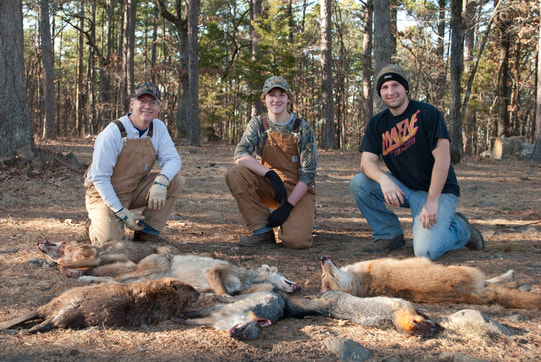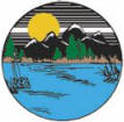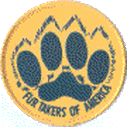|
I guess to put it more bluntly, are you a trapper or not?
Of course this question is based on the current situation with the fur market. This blog is not a market report; it is my take on trapping during rough market conditions. My personal perspective is that consistency is very important. Over the 40+ years I have been around trapping and the fur industry, I can assure you that the most successful trappers are the ones that trap every season. Jumping in and out of the game has never resulted in consistent success no matter what you do. If you decide to sit out a season, or longer, and then decide to trap again, you will find that not only permissions have been lost, but need to be reestablished. You will also find that it will take a while to get back into the swing of things. The cycle of seasonal experience and continuing education has been broken. If you think about it, even for those of us that trap every year, the first day or two may be a little rough and then things will fall into place and become much more familiar. Because of the way fur is marketed, the majority of market establishing sales is not until after most everyone is done trapping. Basically, the information or results are a season behind. You cannot redirect or regroup during the season because of a market change. If the market takes a major upswing as it did a couple of years ago, and you did not have fur on an international auction, you wouldn't have been able to reap the benefits of the sale. So, the word gets out, new trappers jump in and established trappers gear up, only to find out that the bubble burst and fur doesn't have the value it did just 12 months prior. A lot can be said for the consistent trapper; while he saw the decline in price he also was able to take advantage of the windfall. It can also be said that a trapper that is a consistent shipper (to an international auction) comes out ahead on the average as well. This season, I will trap as I always do and I will "hit it" as hard as I always do. I may not walk across a muddy, chisel plowed field to catch a few coons. I will take that same time and effort and direct my attention towards catching what I want to catch. I will put up all my fur, ship it to NAFA and let it ride until it sells. Remember the year behind idea. I will have fur on the market when it comes back, and some will not. Of course, the inconsistent trapper will jump back in and will find himself left with wherever the market goes at that point. Even for the trappers that hold their fur until the market comes back, it is my opinion that they will fall into the year behind effect (their fur is not in a marketable position until after the fact). As I have said many times: "Trapping is more than a fur check, it is a lifestyle and it is engrained in us. It is what we do!" Until next time…. Charlie Masheck P.S. My apologies to all the lady trappers for using the words he and himself!
0 Comments
State Hopping - Trapping Trips Part #2
In the last blog, I mentioned that a hotel is the most convenient/flexible form of lodging. The first year we went to Arkansas, our first choice property was just plain not going to work. We spent the rest of the day driving and looking at other properties, 350 miles later we found one that would be a good fit for trapping. If we had set up camp or booked a room for an extended stay it would have been difficult to be flexible. For the first trip to a new area, always plan that where you stay the first night may not be where you spend the second night. I cannot mention it often enough, going in blind it is very important to be flexible. It is a good idea to have a goal or plan as to what animals you want to target, particularly if you have limited time. Here again you need to be flexible. You should be at least somewhat prepared for all furbearers in the area in case your target animal is just not there in the numbers you had hoped for. Generally, the trips we take are to trap bobcats. While you have to be flexible and willing to adjust, we try not to get too distracted with other types of trapping. In other words, we can trap coons at home and coons in the south are not worth very much- it is just not worth spending limited time on an animal that you can catch at home. The majority of equipment you take should be geared toward the target animal with some additional equipment for other species. Here again flexibility is important. It is very important to have back-up equipment, depending on what it is 2 or 3 duplicates is a good idea. Nothing could mess up a trip more than losing a key item, such as a stake driver without having a back-up Some other suggestions and considerations: Weather - obviously you have no control, try to be prepared. Skinning - try to have a plan in place. It is common for us to use an unoccupied deer camp. Many times they have areas where deer are hung, which are perfect for hanging a skinning gambrel. We normally take a small freezer with us and have found that hotels don't mind us bringing it in to the room. A small freezer works for us however, if you are trapping; beaver, coon or a large number of coyotes you will need a big freezer. Very important! Read and reread the trapping regulations, I don't know of any state that has the exact trapping regulations of my home state. If you run into hunters or other trappers, be friendly. Many times conversation with others can open up other areas for you to trap. Some may become lifelong friends. It is true, some may not welcome a non-resident trapper with open arms - the upside is worth the risk of a grumpy resident! It is always best to size up the situation before having an extended conversation. Sometimes you just have to know when to admit defeat! A couple of seasons ago, Justin and I were on a second trip- the weather literally sent us home. Two days of snow followed by an ice storm warning was enough to persuade us to leave. Ice storms in the south are notorious for power outages, impassable roads, etc.; we just weren't willing to experience all of that first hand. To sum all of this up: don't sweat the small stuff, try to be as flexible as possible, know the laws and have a great time! Until next time…. Charlie Masheck |
AuthorCharlie Masheck has been a trapper since 1972. He started Hoosier Trapper Supply in 1976 and was a fur buyer from 1976 - 1991. Charlie is also the formulator of the Leatherwood Line of trapping scents, Top Dog Predator Bait and Lip Licker Deer Lure. His 46 years of trapping experience and association with trappers and the fur industry have given him a history and perspective of the trapping trade few have. Archives
August 2018
|
|
|
STORE HOURS
Weekdays 10:00am - 5:30pm Saturday 10:00am - 1:00pm Closed Sunday & Major Holidays |
Email: [email protected] Phone: (317) 881-3075
We are members of, and proudly support:
*As Well as Other State Organizations
|
Website Design by: Jake Masheck
|
Copyright © 2024 by Hoosier Trapper Supply Inc.
|



